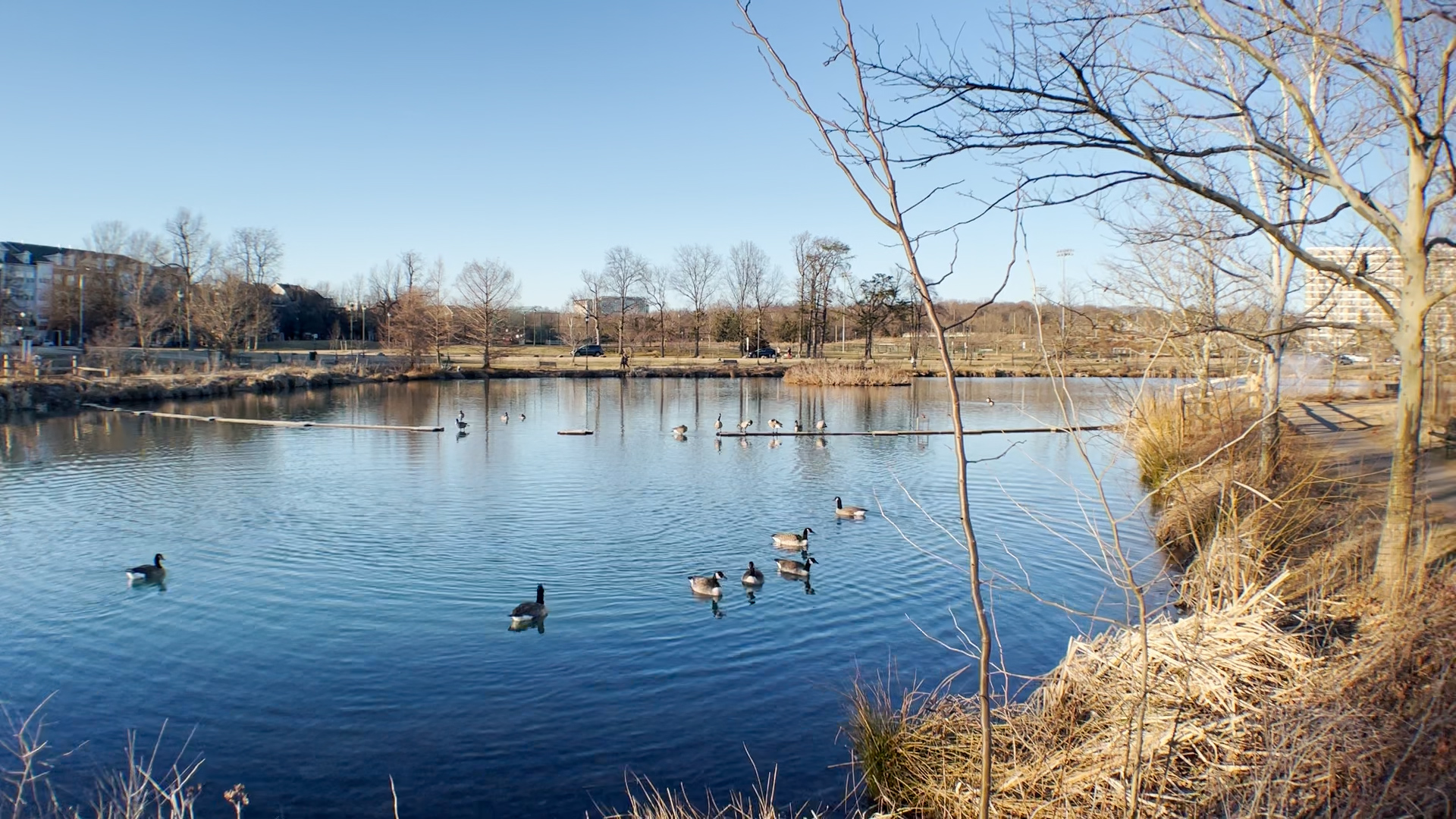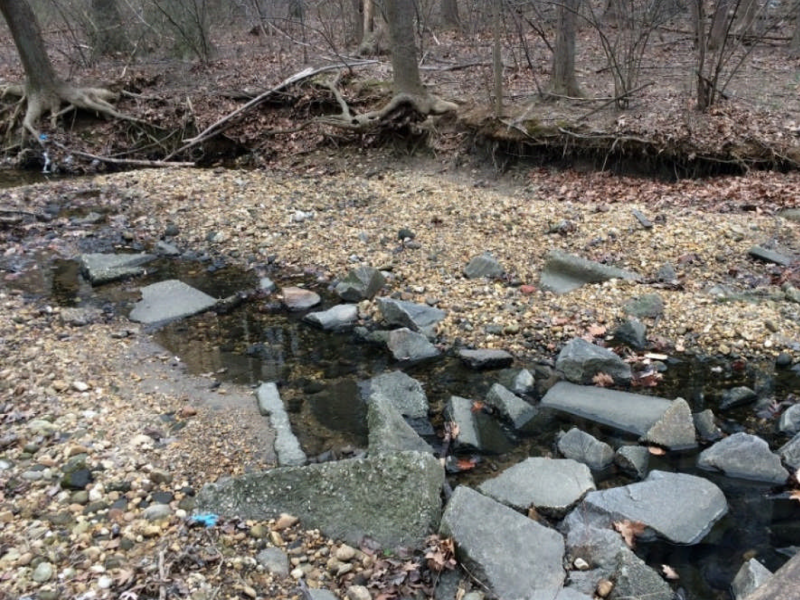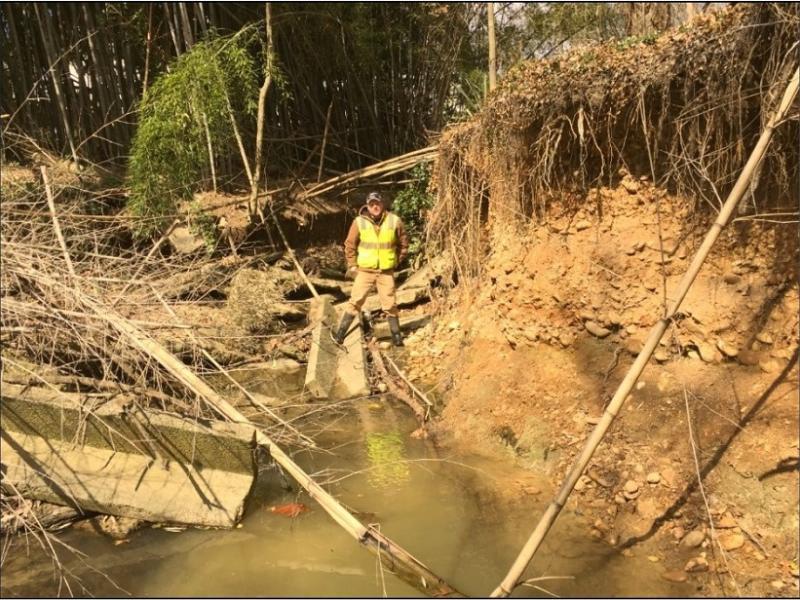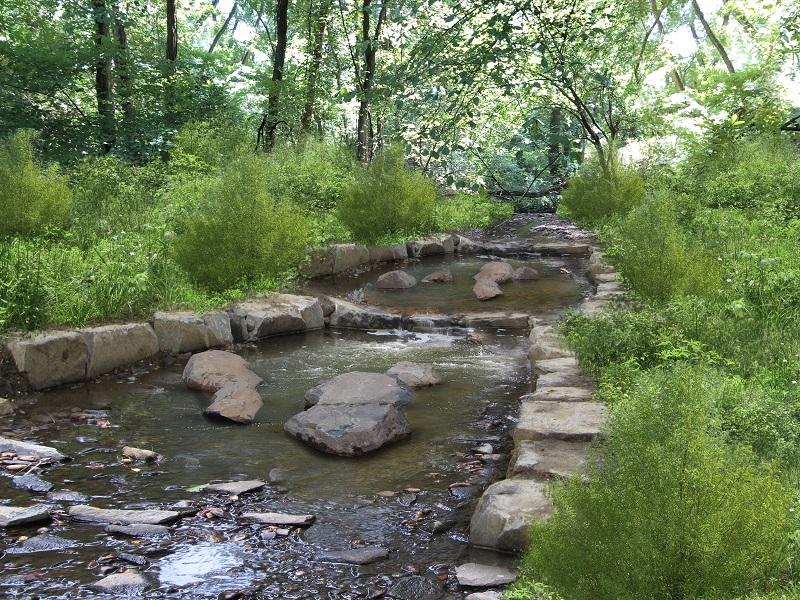Stormwater Infrastructure Projects
The stormwater infrastructure projects presented on this webpage help the City achieve pollution reductions associated with the Chesapeake Bay TMDL as mandated through the City's Municipal Separate Storm Sewer System (MS4) permit. These projects reduce pollution entering our local waters and the Bay and provide community benefits such as improving aesthetics, safety, and protecting sewer infrastructure.
Stream Restoration Projects
Pond Retrofit Projects

Ben Brenman Pond Stormwater Management Retrofit Project
Ben Brenman Pond, also called Cameron Station Pond, is located in Ben Brenman Park. The Ben Brenman Pond Stormwater Management Retrofit Project will retrofit the existing "level 1" stormwater wet pond to a "level 2" stormwater wet pond. This wet pond acts as a stormwater BMP to help filter pollutants, such as nitrogen, phosphorous, and sediment out of the stormwater that enters the pond.
Project Goals and Benefits
- Upgrade the pond to better treat stormwater runoff to help meet Chesapeake Bay cleanup mandates and protect downstream waterways
- Landscaping with native plants to discourage geese and provide habitat for riparian birds and animals
- New educational signage with ecological and stormwater information around the trail
Funding
The Virginia Department of Environmental Quality (VDEQ) awarded the City a $1.75 million Stormwater Local Assistance Fund grant for this project.
Schedule
Construction on this project began in March 2019 and is considered substantially complete as of June 2020.
Lake Cook Stormwater Management Retrofit Project
Lake Cook is located along Eisenhower Avenue in Cameron Run Regional Park, adjacent to Great Waves Waterpark. The Lake Cook Stormwater Management Retrofit Project will retrofit the existing fishing pond to a stormwater wet pond. This wet pond will act as a stormwater best management practice (BMP) to help filter pollutants, such as nitrogen, phosphorous, and sediment out of the stormwater that enters the pond.
The City of Alexandria Public Art Program has selected artist David Hess to join the Lake Cook design team to integrate public art into the retrofit project.
Lake Cook is stocked for fishing by the Department of Games and Inland Fisheries. Please visit the Department of Games and Inland Fisheries website www.dgif.virginia.gov for information about the stocking schedule.
Project Goals and Benefits
- Upgrade the lake to to better treat stormwater runoff to help meet Chesapeake Bay cleanup mandates and protect downstream waterways
- Enhance amenities, create new trail connections and new fishing opportunities
- Landscaping with native plants to discourage geese and provide habitat for riparian birds and animals
- New educational signage with ecological and stormwater information around the trail
Funding
The Virginia Department of Environmental Quality (VDEQ) awarded the City a $1.5 million Stormwater Local Assistance Fund grant for this project.
Schedule
Construction on this project was completed in fall 2018.


